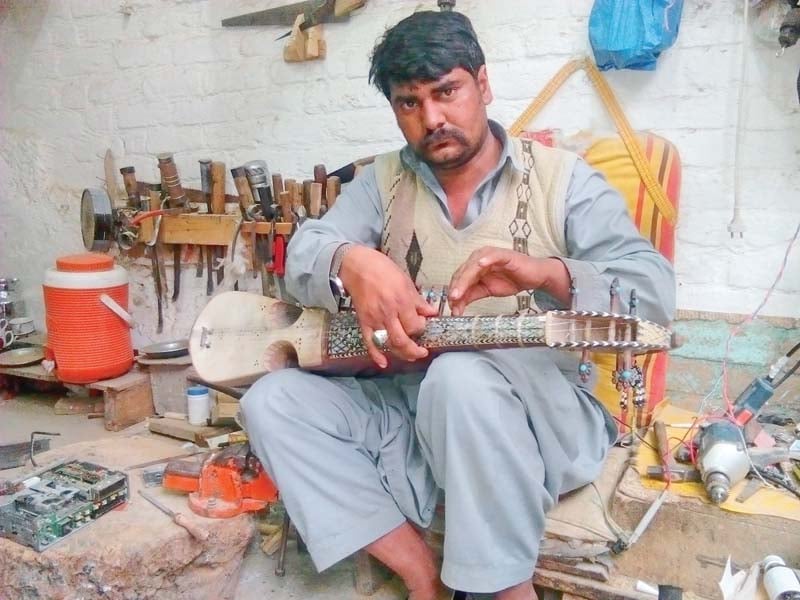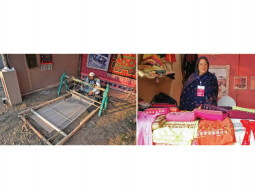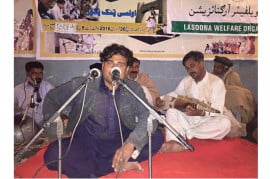
The king of music, rabab, plays on in Swat Valley – tightly wound up but wondrously pliable in the right hands.
People assume militancy and subsequent military operations would by now have wiped out the instrument. But the love for music has held true throughout the valley.
Surreptitious staccato
According to Muhammad Zada, a resident of Ningolai village in Swat Valley, when terrorism reigned Swat, many artisans migrated to safer places.
When Taliban took complete control of Ningolai, cultural events came to a halt and the instrument lost its place in the public realm.
“Before that, men used to sit at their hujras and play the rabab at night, but all that was brought to an abrupt end,” Muhammad Zada, who has been making the instrument for the last 20 years, told The Express Tribune.

The local artisan claimed during that time, most rabab makers shut their shops but continued to make the melodious instrument in secret. “We had no business but we were still occupied,” he added.
The art of making music
Originating from central Afghanistan, the instrument became a staple of musical landscapes dominated by the Pukhtuns.
According to Muhammad Zada, “It takes three months to create one piece which costs around Rs12,000.” The prices increase depending on the material used. “Good quality rababs can fetch up to Rs50,000.”
Usually, rabab is made from the wood of mulberry and walnut tree. “The wood is dried and then carved into,” said Muhammad Zada. “A lot of skill is required on the part of the maker since the task demands attention to meticulous detail and intricacy,” he added.
Small rababs are made of 18 strings while the bigger ones have up to 22 strings. According to Muhammad Zada, mini strings are tied together to make bigger ones. The rabab generally has three main strings, called ‘melody strings’, which are made of gut or nylon and stretched over a bridge made of bone, running to the pegs at the neck of the instrument called the taj. There are also a number of ‘sympathetic strings’ called tarab. They pass under the bridge, ranging from nine through 15, depending on the size of the rabab. The tarabs run to the friction pegs located at the side of the rabab. On the finger board of the instrument, there are four to five nylon frets.
Global for local
The artisan said the instrument is very popular universally. While residents of Swat enjoy its charm, the rest of the country and the world also seems to have caught on.
This is quite evident as Muhammad Zada claimed he not only receives orders from all over the country but from all over the globe – particularly from USA, Dubai, France and Britain.
Published in The Express Tribune, March 3rd, 2016.


























1714024018-0/ModiLara-(1)1714024018-0-270x192.webp)









COMMENTS (1)
Comments are moderated and generally will be posted if they are on-topic and not abusive.
For more information, please see our Comments FAQ